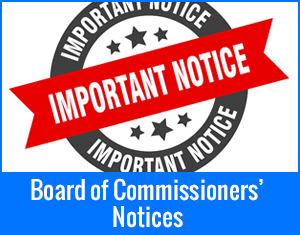
- By Thomas Hillis
- Posted Friday, March 1, 2019
Ozone Season 2019 Has Begun!
Forsyth County Office of Environmental Assistance and Protection (EAP) will begin its 2019 Ozone Monitoring Season today.
Forsyth County Keeping You Informed!
Forsyth County’s Office of Environmental Assistance and Protection monitors ozone levels from March through October at monitoring sites set up throughout the county. In addition to ensuring on-demand air quality data is available to the public, EAP also uses meteorological and air quality data to publish daily air quality forecasts at http://forsyth.cc/EAP/dailyforecast.aspx . Alternatively, no matter where you are in the country, you can go to AirNow.gov, enter your zip code and get the current air quality and forecast for your region. And finally, if you’d simply like to be alerted when local air quality reaches a level of concern, you can sign up for email/text/fax alerts at EnviroFlash.org .
Wait, which Ozone?
Often when we think of ozone, we think of the layer of gas miles above Earth’s surface that helps protect us from the Sun’s ultraviolet radiation. That’s when ozone is good- when it’s up high. However, when ozone forms at ground-level, it can be harmful to human health and the environment.
How is Ground-level Ozone formed?
Ground-level ozone is not emitted directly into the air but is created via the chemical reaction between oxides of nitrogen (NOx) and volatile organic compounds (VOC’s). Some VOC’s can be hazardous and are emitted through human-related activity, however in North Carolina most VOC’s are present in the atmosphere due to emissions given off by trees and other vegetation. Oxides of nitrogen (NOx) are emitted from sources that include cars, power plants, and other area sources, with vehicles being responsible for over half of overall emissions.
NOx and VOC’s can react in our atmosphere year-round, but as we head towards the warmer months, energy from the sun acts as a catalyst for ozone formation.
How Harmful is Ozone?
In terms of health, ground-level ozone can result in various respiratory issues including breathing difficulties, shortness of breath, wheezing, and coughing. Additionally, ground-level ozone can worsen symptoms of asthma, COPD, and emphysema. Those most susceptible to the impacts of ground-level ozone, and poor air quality in general, include those with preexisting respiratory conditions, children, and seniors.
In terms of the environment, ground-level ozone can damage certain vegetation and thus have an echoing impact on those ecosystems of which the vegetation is a part.
You Can Help!
In two ways- the first is to help reduce emissions. There are many ways to reduce vehicle emissions, including carpooling or taking public transit, using our city and county greenways, or even simply being mindful of unnecessary vehicle idling.
The other way is to sign up for air quality alerts at Enviroflash.org and spread the word- especially to those that are most susceptible to the impacts of poor air quality. Once you’re signed up for alerts, if there is a day when air quality in our area reaches levels of concern, you’ll get an “Air Action Day” alert. On Air Action Days everyone in the community is encouraged to help limit emissions that come from everyday sources like lawn equipment, outdoor cooking, and vehicle emissions as much as possible.
How Far We’ve Come
Through education, advances in technology, and local community commitment to environmental stewardship, Forsyth County has been able to steadily and significantly reduce ground-level ozone pollution- and the proof is in the numbers. For example, in 2018 there were 2 days (June 8th & June 15th) when air quality reached levels of concern, compare that to 16 days in 2008, and 68 days in 1998! We’re heading in the right direction, let’s keep going.






